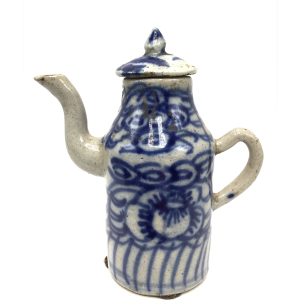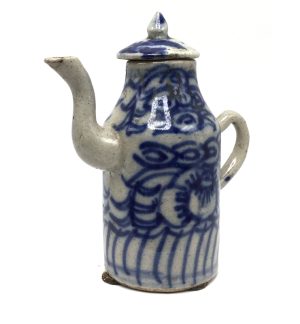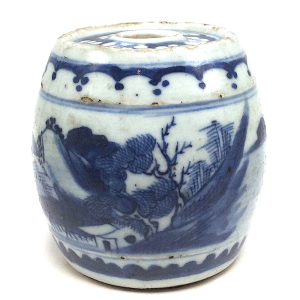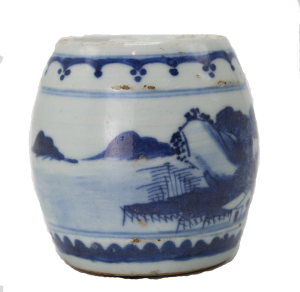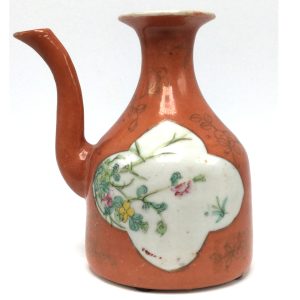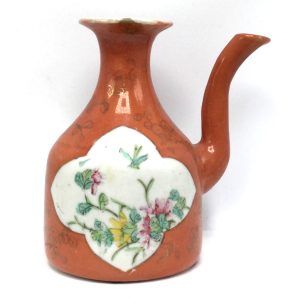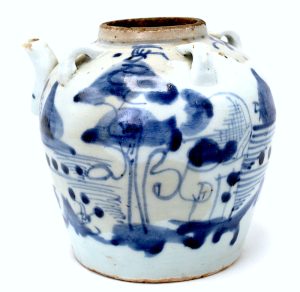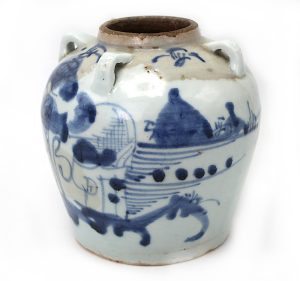-
Sale!


$135.00 Original price was: $135.00.$95.00Current price is: $95.00.
H: 5.25″ W: 4.625″ D: 2.375″ | FREE SHIPPING WITHIN CONTINENTAL U.S.
Charming miniature pitcher probably used in a restaurant or home kitchen as a dispenser for soy sauce, oils or other liquids. Elegant shape, covered with chrysanthemums, plantain leaves and bindweed vines with lotus bud on top.
-
Sale!


$255.00 Original price was: $255.00.$195.00Current price is: $195.00.
H: 3.25” Dia: 3.25” | FREE SHIPPING WITHIN CONTINENTAL U.S.
With its round body covered with a Chinese village landscape, mountains, seas and calligraphic scholar owner’s name, this ceramic brush holder/paper weight was used a scholar’s desk along with pots, brushes, water droppers, boxes, ink stones and other objects and would be perfect on any style desk.
-
Sale!


$235.00 Original price was: $235.00.$195.00Current price is: $195.00.
H: 4.875″ W: 4.5″ D: 3.25″ | FREE SHIPPING WITHIN CONtINENTAL U.S.
Elegantly shaped porcelain ewer with graceful spout, saffron-colored glaze, quatrefoil panels and hand-painted floral designs within a gold frame with sinuous gold leaf vines.
-
Sale!


$145.00 Original price was: $145.00.$105.00Current price is: $105.00.
H: 5” W: 5.25” D: 4.5” | FREE SHIPPING within continental US.
Blue and white ceramics like spouted jar with four loops, were used in home kitchens and restaurants to hold oil, sauces, soy or other liquids. Decorated with country scene in a landscape with by tall trees.
End of content
End of content

